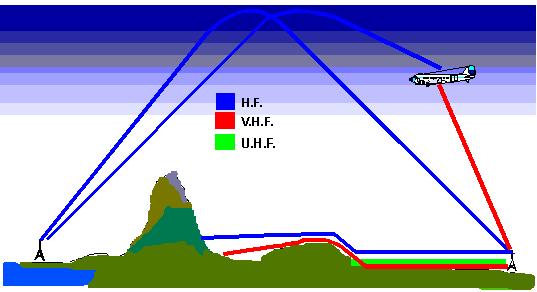|
In the earliest days of flight, there were no aids to navigation - it was easier to get lost than anything else. Techniques included advanced practices such as 'looking for landmarks' and 'following roads as if a car'. The next great breakthrough in airborne navigation came in the form of lighted paths along the ground. Pioneered by the United States Post Office in order to carry out airmail deliveries, routes were lined with (first bonfires, in the nascent stages of night flight) rotating beacons whilst airfields were fitted with lighting around the boundary. This system lasted up until the 1930's, but by then, there was a new kid on the block when it came to navigating the country's vast tracts of land. No longer was it necessary to even look outside the window of your aircraft to get around - instead, all you needed was a pair of headphones, a few dials, and a radio.
These new 'radionavigation' systems, albeit rudimentary, gave a tremendous increase in efficiency and safety over visual methods (especially in poor weather conditions.) Radio waves are able to penetrate through clouds that would otherwise block any sort of visual light, in addition to travelling much further than visual light, even over the horizon! |
Radio wave behaviour over long distance
https://radiojove.gsfc.nasa.gov/education/educ/radio/tran-rec/exerc/iono.htm |
